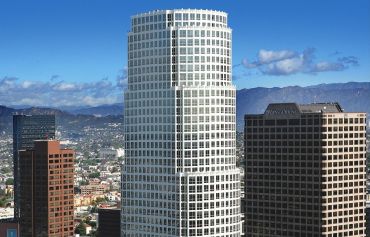As Multifamily Sales Suffer, Industrial and Commercial Thrive in the Outer Boroughs
By Alex Appel and Rebecca Baird-Remba July 30, 2019 2:56 pm
reprints
The multifamily investment market may have taken a plunge after the state legislature began discussing rent law reforms in January, but the sales of development sites and commercial buildings in the outer boroughs have helped prop up New York City’s real estate market during the first six months of the year.
New mid-year reports from Ariel Property Advisors paint a dreary picture for the residential investment market. Large multifamily properties in Manhattan and Queens saw the biggest dips in dollar volume of sales year-over-year. Buildings with ten or more apartments — which are more likely to be rent-stabilized than any other kind of residential property — saw the largest declines in dollar volume, dropping 24 percent from the first half of 2018 to the first half of 2019 in Manhattan and 56 percent over the same period in Queens.
Overall, Manhattan’s investment sales volume declined by a third, dropping to $9.37 billion worth of sales in the first half of 2019 from $13.77 billion in the first half of 2018. Fewer large deals were closed during the first six months of 2019 than in the same time frame last year, though the latter included a number of big-ticket trades such as Google (GOOGL)’s $2.39 billion purchase of Chelsea Market.
Even without mammoth deals, the dollar volume of retail and office sales increased by 13 percent from the first half of 2018, accounting for 53 percent of the money exchanged on Manhattan deals so far this year. Large transactions in 2019 include We Company’s $850-million purchase of Lord & Taylor’s 424-435 location and the $565.7 million sale of One Dag Hammarskjold at 885 Second Avenue to the Rockpoint Group.
With 100 deals, the multifamily market had the highest number of transactions in Manhattan. Demand increased for residential properties with nine or fewer units and mixed-use properties because they’re less likely to be rent-regulated and often have limits on how much their taxes can increase annually, according to Howard Raber, an investment sales broker at Ariel. Investors became more hesitant about purchasing large apartment buildings once they knew the state legislature was intent on reforming the rent stabilization system, he said.
The dollar volume of the Manhattan multifamily market decreased by 13 percent, from $2.2 billion during the first half of 2018, to $1.9 billion so far in 2019.
Northern Manhattan, which is defined as Morningside Heights, Harlem, East Harlem and further north, also took a hit during the first half of the year. While there were steady development and commercial property sales, multifamily assets suffered a 67% year-over-year decline in the number of sales which dragged the market down by 21% to $644.4 million.
The outer boroughs posted similarly disappointing trends on the residential side, but commercial and industrial property sales outside of Manhattan remained strong.
The Queens industrial market saw a 176 percent boost in dollar volume year-over-year to $452 million in the first half of the year, and the Bronx posted a 477 percent increase in year-over-year dollar volume for industrial and warehouse properties to $269 million.
The Bronx uptick was largely driven by e-commerce companies’ growing need for last-mile distribution space. For example, after securing Amazon as a tenant last year, the owners of the warehouses at 1300 Viele Avenue and 1301 Ryawa Avenue in Hunts Point were able to unload their properties for $70 million, a borough record of $603 a square foot. Bronx office buildings, development sites and commercial properties also posted smaller but still significant year-over-year gains in dollar volume.
In fact, the Bronx was the only borough that posted an overall increase in the dollar volume of investment sales compared to last year. Investors spent $1.15 billion in the uppermost borough in the first half of 2019, an increase of 23 percent compared to the same period last year.


